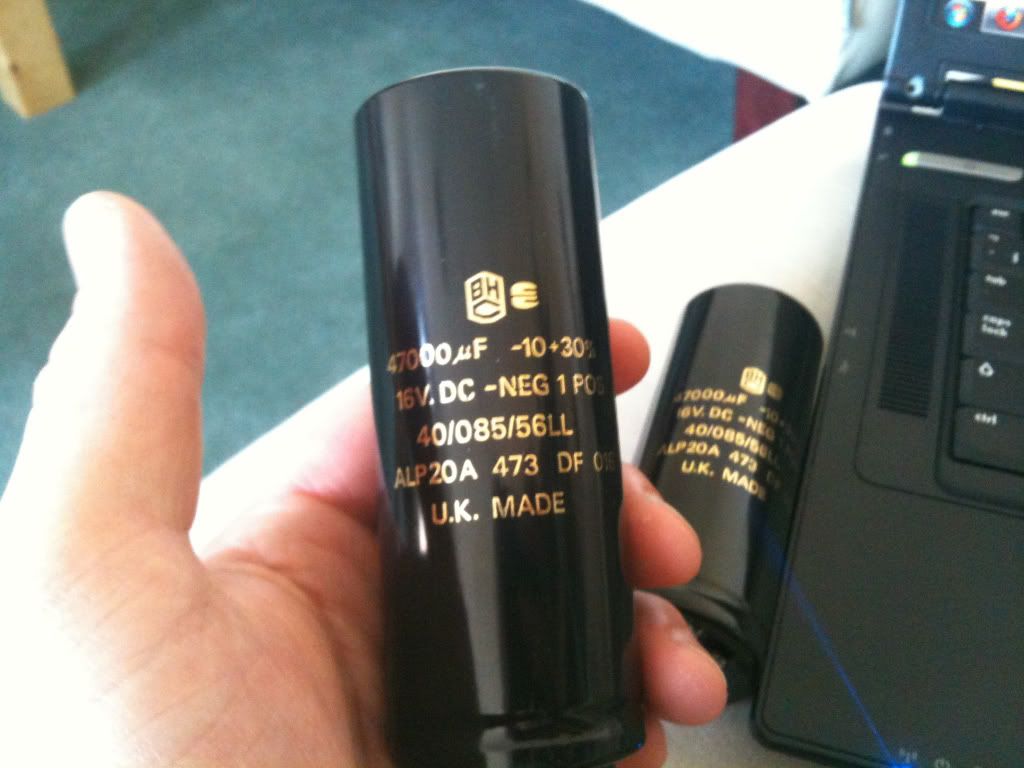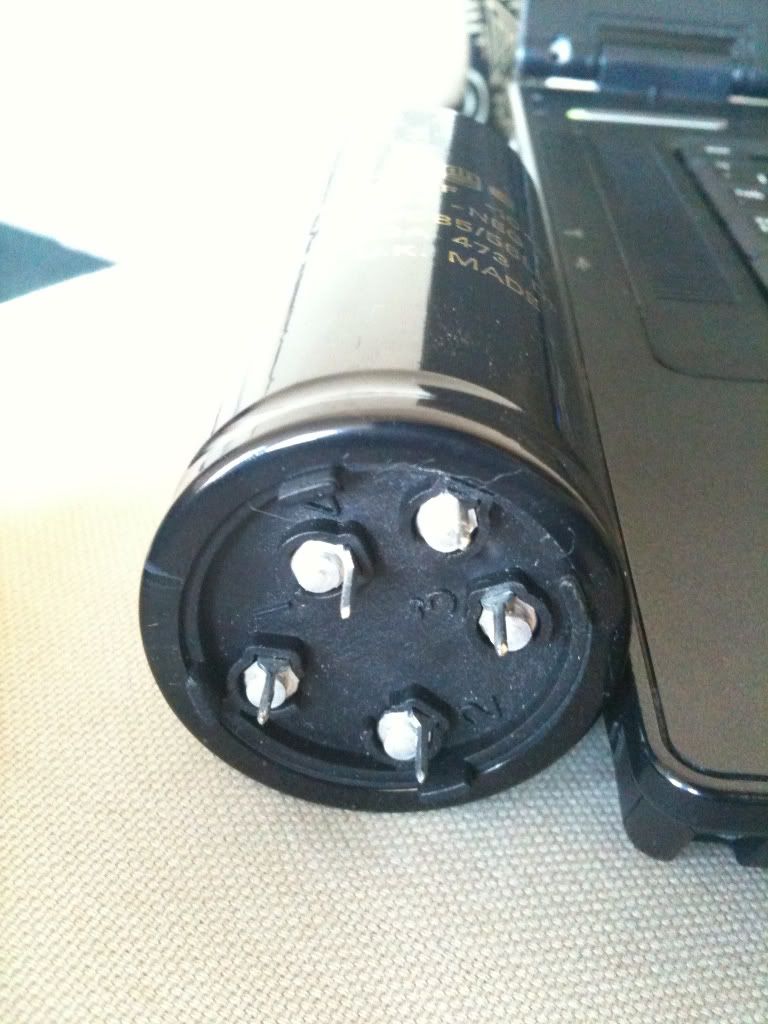Can anyone shed anylight on what these two caps are; they look pretty vintage:
The yellow one is coated I think in a hard ceramic
text:
1uf
+/-10%
160v DC
O.S
The black one is resin filled
text:
ELCAP
3.3MFD
50V
N.P
93-7625
Any Idea what type of cap they are? they both measure fine on the meter; I thought they might be nice for a Guitar amp build.

The yellow one is coated I think in a hard ceramic
text:
1uf
+/-10%
160v DC
O.S
The black one is resin filled
text:
ELCAP
3.3MFD
50V
N.P
93-7625
Any Idea what type of cap they are? they both measure fine on the meter; I thought they might be nice for a Guitar amp build.

hello.
the first (yellow) one should be a foil cap,probably a mkt type.
the other one an electrolytic cap ,non polarised type (n.p.).
greets
the first (yellow) one should be a foil cap,probably a mkt type.
the other one an electrolytic cap ,non polarised type (n.p.).
greets
Last edited:
Cheers MJ
I can see the yellow one going in my amp; I've never seen a potted electrolytic before!
I can see the yellow one going in my amp; I've never seen a potted electrolytic before!
The nonpolar black one is for crossover networks, for example, where there is no dc applied and yet one would like to take advantage of the small size and cost of electrolytic capacitors.
The nonpolar black one is for crossover networks, for example, where there is no dc applied and yet one would like to take advantage of the small size and cost of electrolytic capacitors.
It's also probably 50yrs old and a good candidate for the dust bin... (OR a curio)
It's also probably 50yrs old and a good candidate for the dust bin... (OR a curio)
I never throw anything away! you never know when you might need a dried up 50 year old non-polarized electrolytic capacitor. the Poly should be fine though I would have thought??
........yes,if the volt rating is big enough for your (guitar) application.
could look pretty in a vintage amp..........
could look pretty in a vintage amp..........
While I'm ghoing through my collection of capacitors; can anyone help me find any info/pin-out for these bigens:
47000uF -10 +30%
16V.DC -NEG 1 POS
40/085/56LL
ALP20A 473 DF 016
U.K. MADE


47000uF -10 +30%
16V.DC -NEG 1 POS
40/085/56LL
ALP20A 473 DF 016
U.K. MADE


The yellow one is coated I think in a hard ceramic
text:
1uf
+/-10%
160v DC
O.S
This looks quite old, maybe 1960s-1970s vintage, particularly with the "1uF" marking rather than "105" that is more often used these days. In which case it would be an ordinary polyester cap, with no "metallisation".
The black one is resin filled
text:
ELCAP
3.3MFD
50V
N.P
93-7625
A non-polarised electrolytic cap. Looks quite old too. I would not use this. Polyester caps are available these days in 3.3uF 50V that would perform much better than a non-polarised electro.
Cheers guys;
any help with the big cans? I can't find a data sheet anywhere for them.
Had you already found this document:
http://cn.100y.com.tw/pdf_file/05-BHC-AluCaps.pdf
The writing "- NEG" on the capacitor suggests that one of the pins is labelled - (a minus sign) for the "negative" voltage;
and "1 POS" that pin 1 is for the "positive" voltage.
This is consistent with the document in the link (page 44 for the ALP20 series).
I can't see from the picture if the unlabelled "fifth" pin actually has a minus sign.
As you probably know, the other pins that are not V+ and V- are probably not connected and only have the purpose of physically holding the large can.
Hope this helps...
_
Last edited:
Had you already found this document:
http://cn.100y.com.tw/pdf_file/05-BHC-AluCaps.pdf
The writing "- NEG" on the capacitor suggests that one of the pins is labelled - (a minus sign) for the "negative" voltage;
and "1 POS" that pin 1 is for the "positive" voltage.
This is consistent with the document in the link (page 44 for the ALP20 series).
I can't see from the picture if the unlabelled "fifth" pin actually has a minus sign.
As you probably know, the other pins that are not V+ and V- are probably not connected and only have the purpose of physically holding the large can.
_
Thats great Pilli thanks,
- Status
- Not open for further replies.
- Home
- Design & Build
- Parts
- Help ID some old caps